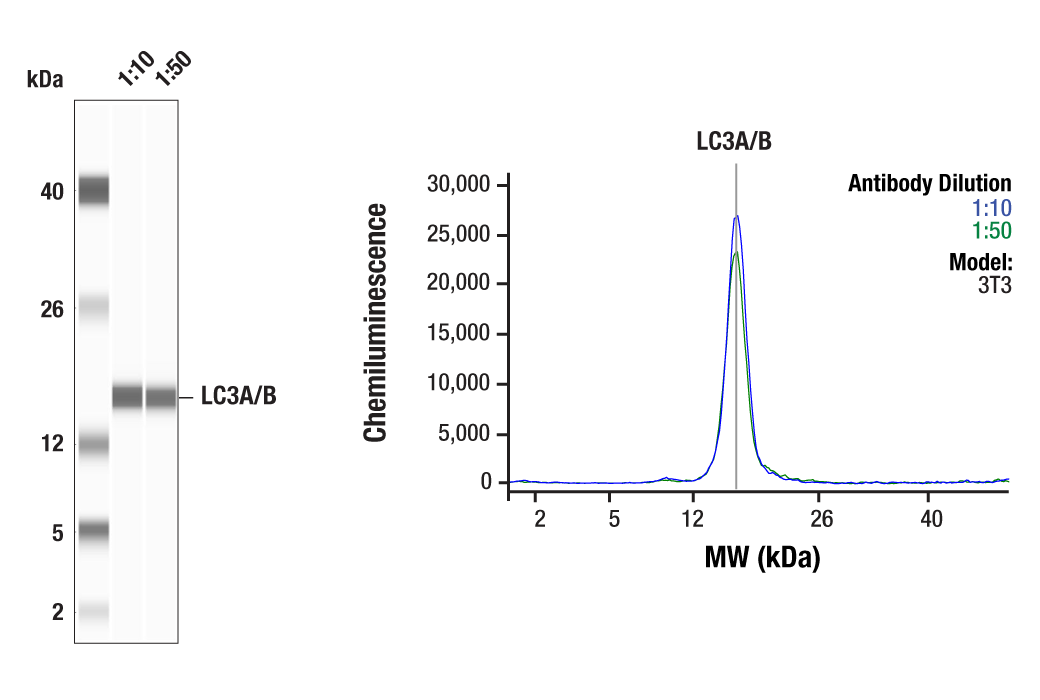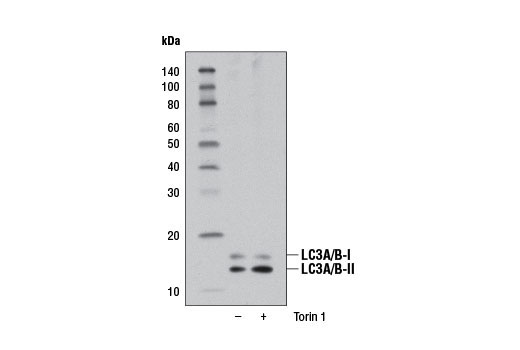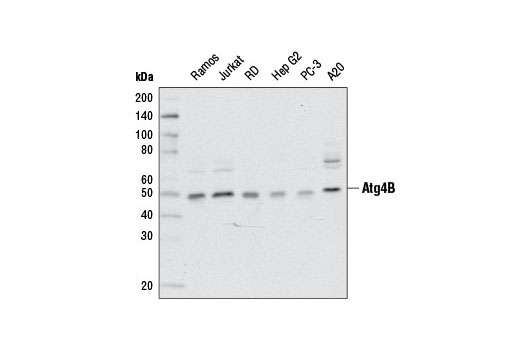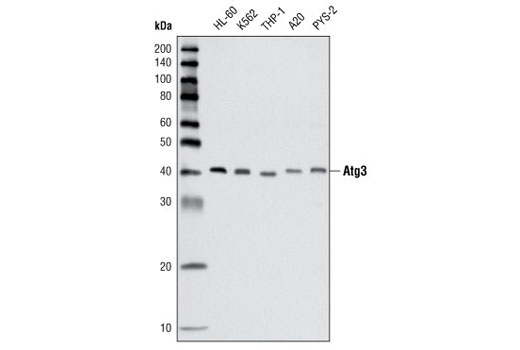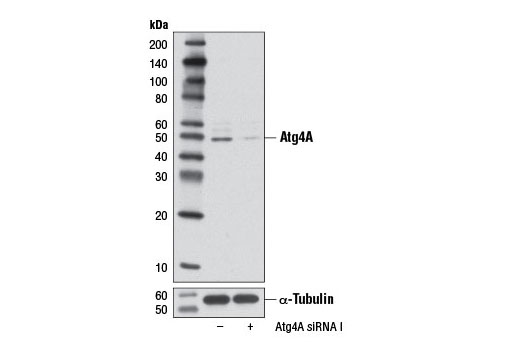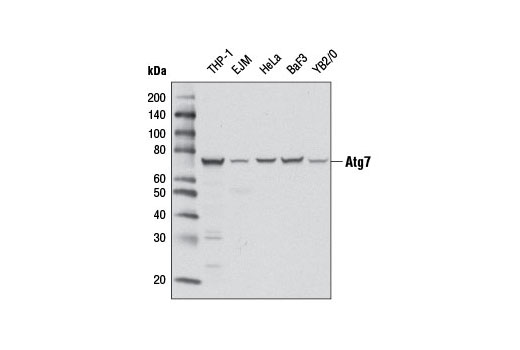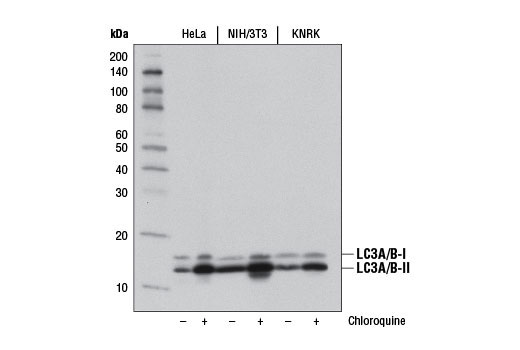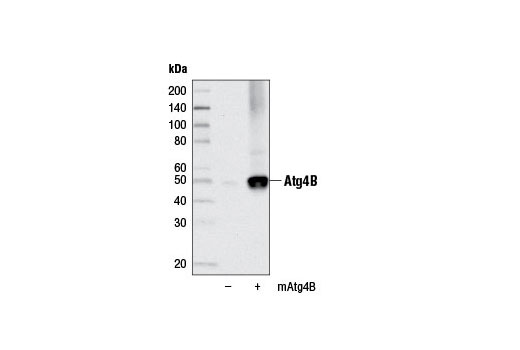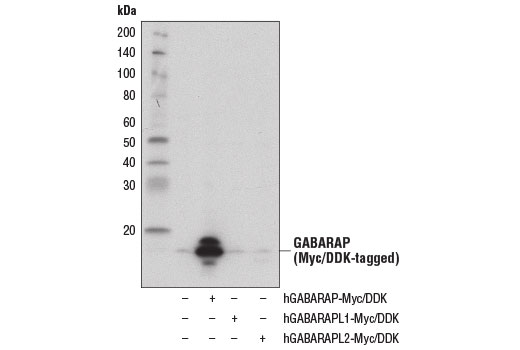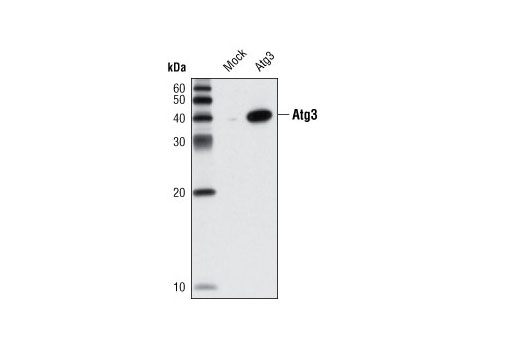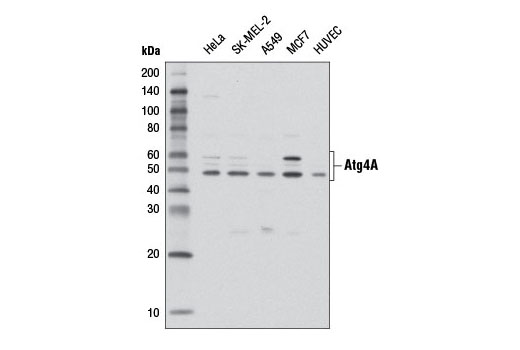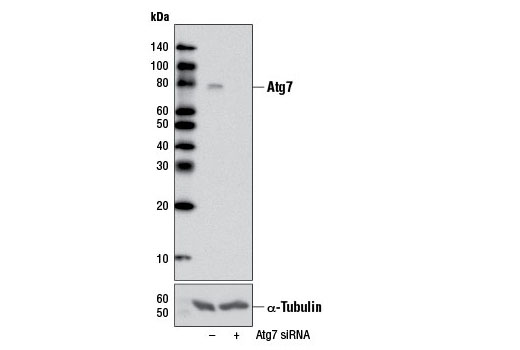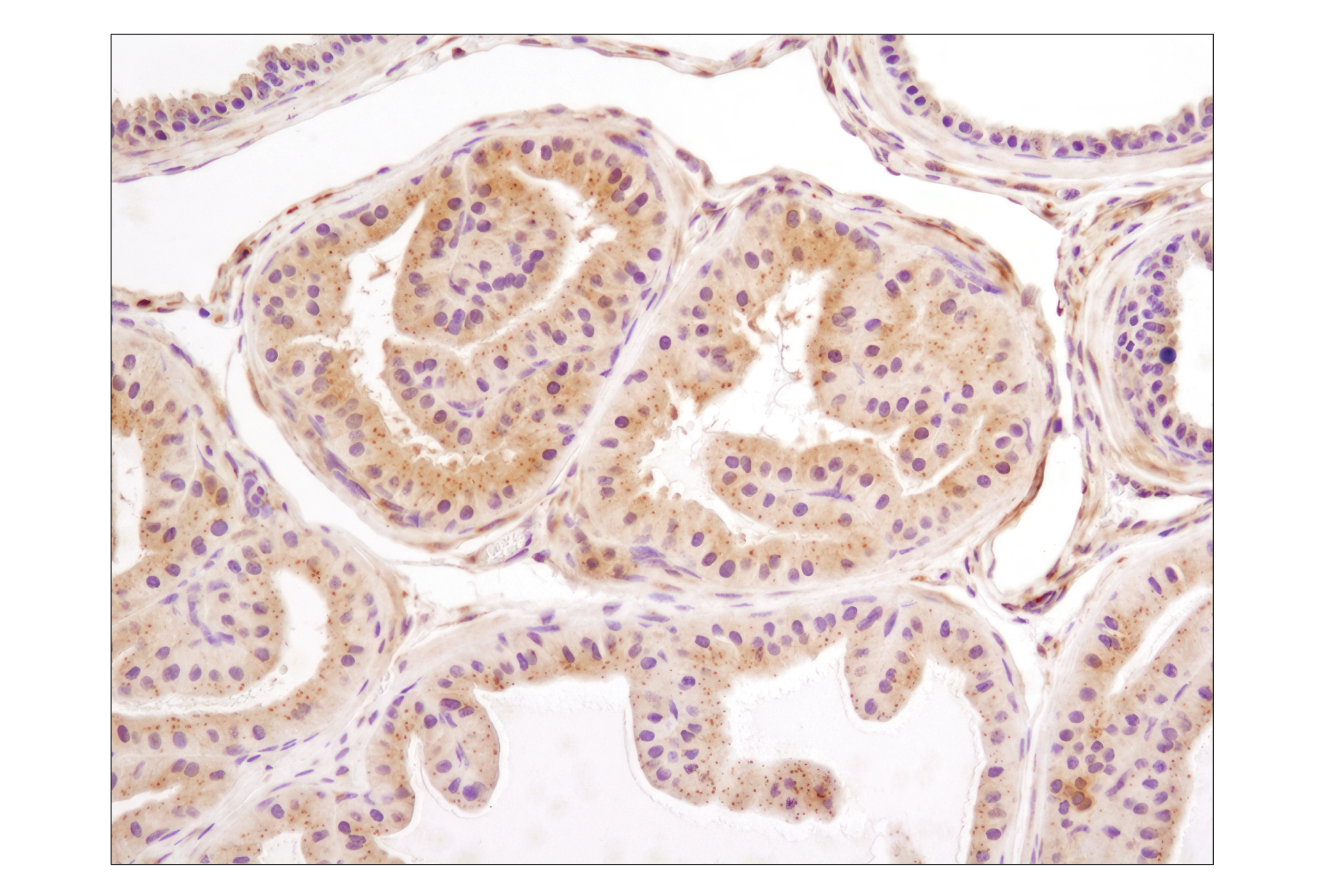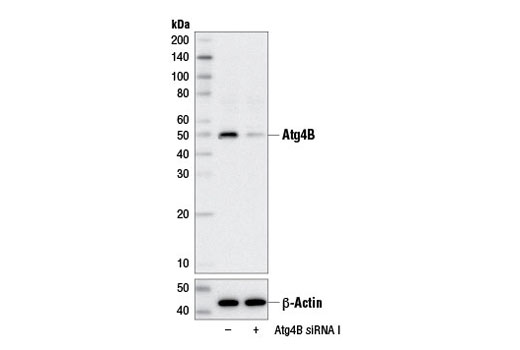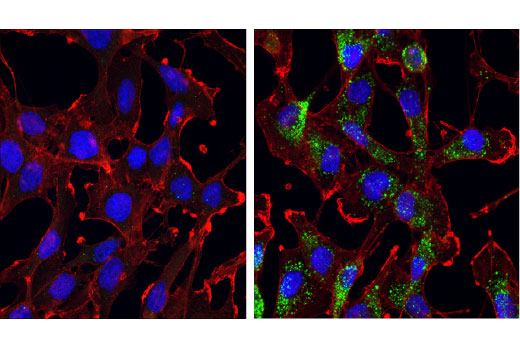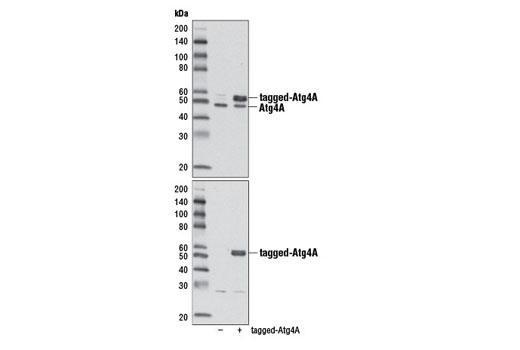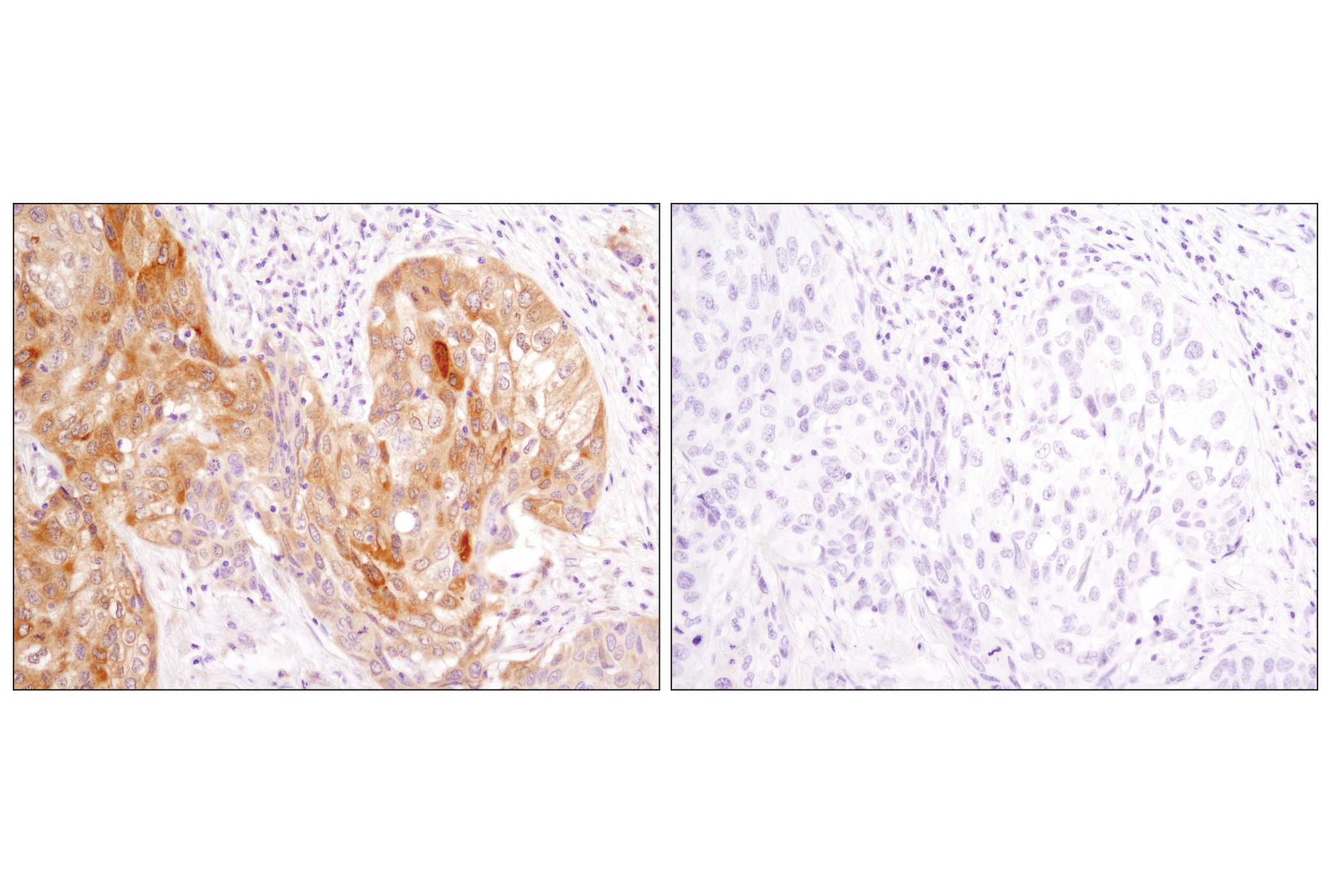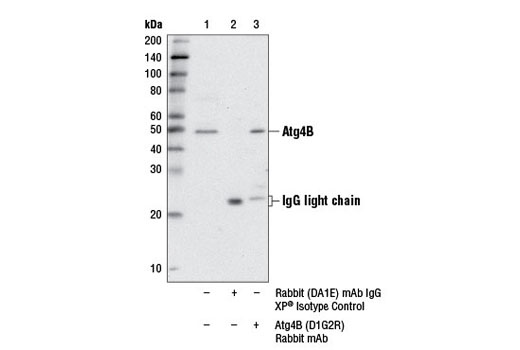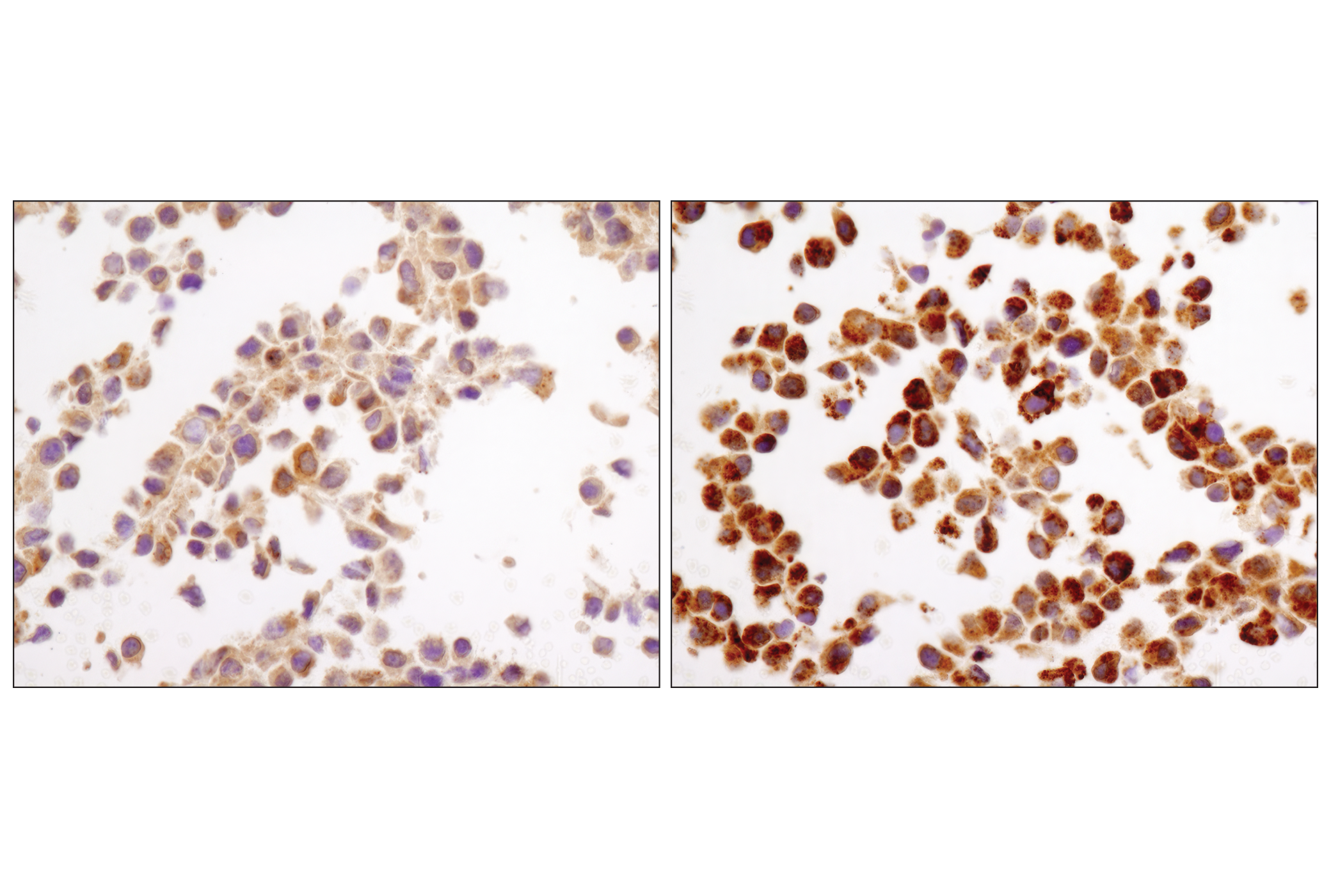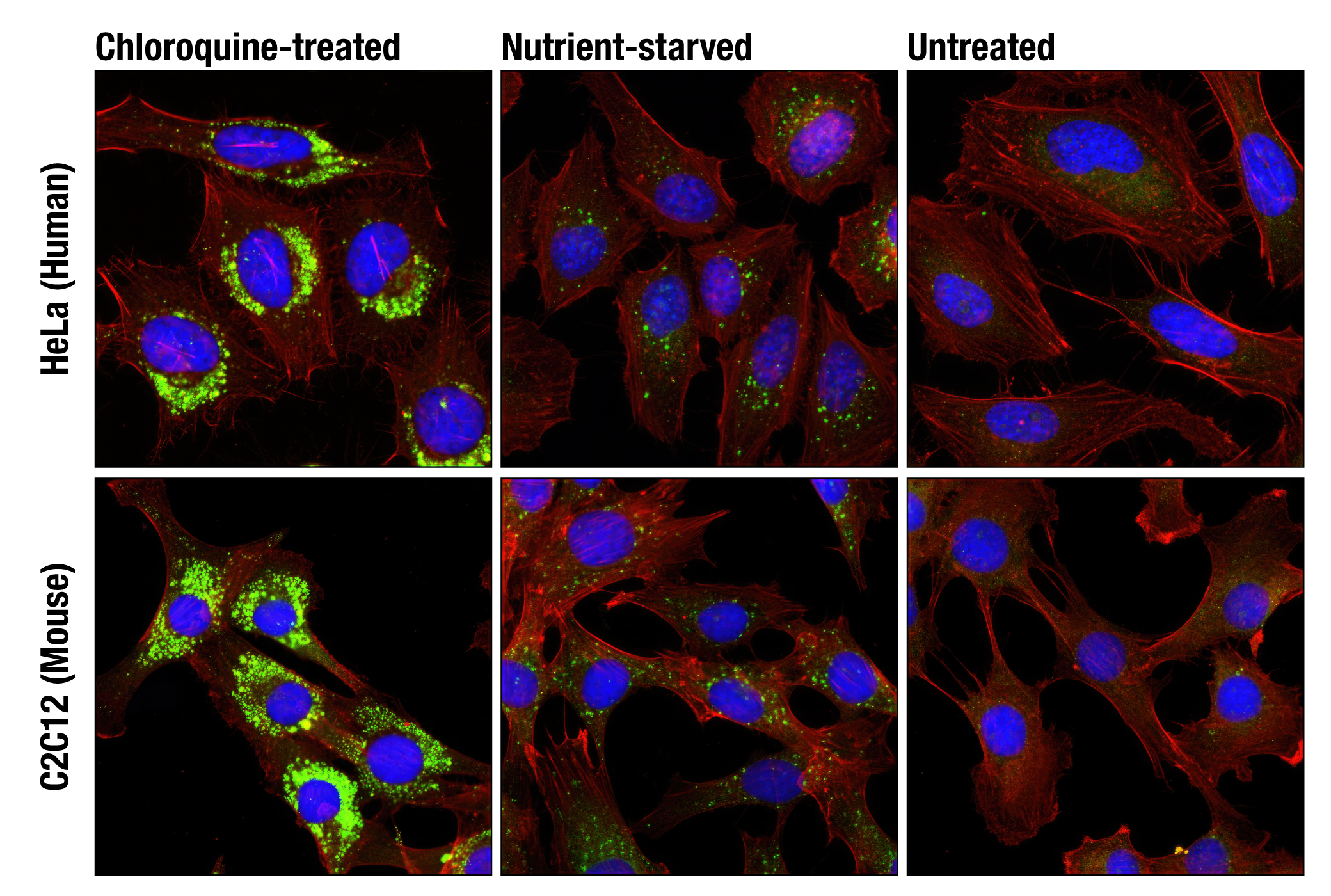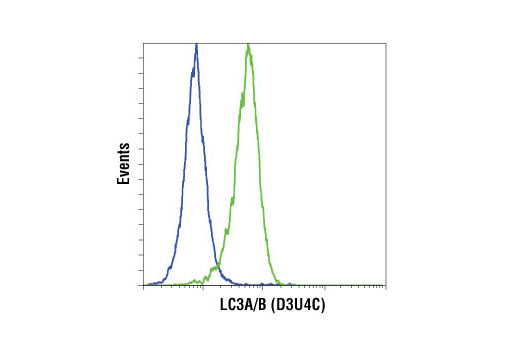| Product Includes | Product # | Quantity | Mol. Wt | Isotype/Source |
|---|---|---|---|---|
| LC3A/B (D3U4C) XP® Rabbit mAb | 12741 | 20 µl | 14, 16 kDa | Rabbit IgG |
| Atg7 (D12B11) Rabbit mAb | 8558 | 20 µl | 78 kDa | Rabbit IgG |
| Atg4B (D1G2R) Rabbit mAb | 13507 | 20 µl | 48 kDa | Rabbit IgG |
| Atg4A (D62C10) Rabbit mAb | 7613 | 20 µl | 48-60 kDa | Rabbit IgG |
| GABARAP (E1J4E) Rabbit mAb | 13733 | 20 µl | 14, 16 kDa | Rabbit IgG |
| Atg3 Antibody | 3415 | 20 µl | 40 kDa | Rabbit |
| Anti-rabbit IgG, HRP-linked Antibody | 7074 | 100 µl | Goat |
Please visit cellsignal.com for individual component applications, species cross-reactivity, dilutions, protocols, and additional product information.
Description
The Autophagy Vesicle Elongation (LC3 Conjugation) Antibody Sampler Kit provides an economical means of detecting target proteins related to autophagy vesicle elongation pathway. The kit contains enough antibody to perform two western blots per primary.
Storage
Background
Autophagy is a catabolic process for the autophagosomic-lysosomal degradation of bulk cytoplasmic contents (1,2). Autophagy is generally activated by conditions of nutrient deprivation, but it has also been associated with a number of physiological processes including development, differentiation, neurodegenerative diseases, infection, and cancer (3). Autophagy marker Light Chain 3 (LC3) was originally identified as a subunit of microtubule-associated proteins 1A and 1B (termed MAP1LC3) (4) and subsequently found to contain similarity to the yeast protein Apg8/Aut7/Cvt5 critical for autophagy (5). Three human LC3 isoforms (LC3A, LC3B, and LC3C) undergo post-translational modifications during autophagy (6-8). Cleavage of LC3 at the carboxy terminus immediately following synthesis yields the cytosolic LC3-I form. During autophagy, LC3-I is converted to LC3-II through lipidation by a ubiquitin-like system involving Atg7 and Atg3 that allows for LC3 to become associated with autophagic vesicles (6-9). The presence of LC3 in autophagosomes and the conversion of LC3 to the lower migrating form, LC3-II, have been used as indicators of autophagy (10). Numerous mammalian counterparts to yeast Atg proteins have been described, including three Atg8 proteins (GATE-16, GABARAP, and LC3) and four Atg4 homologs (Atg4A/autophagin-2, Atg4B/autophagin-1, Atg4C/autophagin-3, and Atg4D/autophagin-4) (10-12). The cysteine protease Atg4 is pivotal to autophagosome membrane generation and regulation (13). GABAA receptor associated protein (GABARAP) is an Atg8 family protein with a key role in autophagy, which was originally discovered as a protein associated with the GABAA receptor regulating receptor trafficking to the plasma membrane (14). Processing of GABARAP involves cleavage by Atg4 family members (15,16) followed by conjugation by the E1 and E2 like enzymes Atg7 and Atg3 (17,18).
- Reggiori, F. and Klionsky, D.J. (2002) Eukaryot Cell 1, 11-21.
- Codogno, P. and Meijer, A.J. (2005) Cell Death Differ 12 Suppl 2, 1509-18.
- Levine, B. and Yuan, J. (2005) J Clin Invest 115, 2679-88.
- Mann, S.S. and Hammarback, J.A. (1994) J Biol Chem 269, 11492-7.
- Lang, T. et al. (1998) EMBO J 17, 3597-607.
- He, H. et al. (2003) J Biol Chem 278, 29278-87.
- Tanida, I. et al. (2004) J Biol Chem 279, 47704-10.
- Wu, J. et al. (2006) Biochem Biophys Res Commun 339, 437-42.
- Ichimura, Y. et al. (2000) Nature 408, 488-92.
- Kabeya, Y. et al. (2004) J Cell Sci 117, 2805-12.
- Kabeya, Y. et al. (2000) EMBO J 19, 5720-8.
- Mariño, G. et al. (2003) J Biol Chem 278, 3671-8.
- Sou, Y.S. et al. (2008) Mol Biol Cell 19, 4762-75.
- Wang, H. et al. (1999) Nature 397, 69-72.
- Tanida, I. et al. (2004) J Biol Chem 279, 36268-76.
- Hemelaar, J. et al. (2003) J Biol Chem 278, 51841-50.
- Tanida, I. et al. (2001) J Biol Chem 276, 1701-6.
- Tanida, I. et al. (2002) J Biol Chem 277, 13739-44.
Background References
Trademarks and Patents
使用に関する制限
法的な権限を与えられたCSTの担当者が署名した書面によって別途明示的に合意された場合を除き、 CST、その関連会社または代理店が提供する製品には以下の条件が適用されます。お客様が定める条件でここに定められた条件に含まれるものを超えるもの、 または、ここに定められた条件と異なるものは、法的な権限を与えられたCSTの担当者が別途書面にて受諾した場合を除き、拒絶され、 いかなる効力も効果も有しません。
研究専用 (For Research Use Only) またはこれに類似する表示がされた製品は、 いかなる目的についても FDA または外国もしくは国内のその他の規制機関により承認、認可または許可を受けていません。 お客様は製品を診断もしくは治療目的で使用してはならず、また、製品に表示された内容に違反する方法で使用してはなりません。 CST が販売または使用許諾する製品は、エンドユーザーであるお客様に対し、使途を研究および開発のみに限定して提供されるものです。 診断、予防もしくは治療目的で製品を使用することまたは製品を再販売 (単独であるか他の製品等の一部であるかを問いません) もしくはその他の商業的利用の目的で購入することについては、CST から別途許諾を得る必要があります。 お客様は以下の事項を遵守しなければなりません。(a) CST の製品 (単独であるか他の資材と一緒であるかを問いません) を販売、使用許諾、貸与、寄付もしくはその他の態様で第三者に譲渡したり使用させたりしてはなりません。また、商用の製品を製造するために CST の製品を使用してはなりません。(b) 複製、改変、リバースエンジニアリング、逆コンパイル、 分解または他の方法により製品の構造または技術を解明しようとしてはなりません。また、 CST の製品またはサービスと競合する製品またはサービスを開発する目的で CST の製品を使用してはなりません。(c) CST の製品の商標、商号、ロゴ、特許または著作権に関する通知または表示を除去したり改変したりしてはなりません。(d) CST の製品をCST 製品販売条件(CST’s Product Terms of Sale) および該当する書面のみに従って使用しなければなりません。(e) CST の製品に関連してお客様が使用する第三者の製品またはサービスに関する使用許諾条件、 サービス提供条件またはこれに類する合意事項を遵守しなければなりません。
